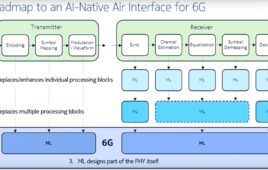One of the biggest flaws of autonomous vehicles is their limited ability to detect lanes in hazardous conditions like heavy rain and snow. One potential solution to this issue has been developed by U.S.-based company WaveSense, which recently announced the commercialization of its patented ground-penetrating radar (GPR). The aim behind this technology is to significantly improve safety and precision of navigation on any road, regardless of weather conditions. The radar uses safety-first optical sensors that are capable of scanning up to 10 ft below the surface of the road, so they can lock on stable ground.
This data can then be combined with information from the vehicle’s other onboard sensors to form a map of subterranean features, so the vehicle can maintain its position on the road. According to WaveSense, their GPR has demonstrated accuracy up to 60 mph, and can pinpoint a location within an inch at highway-caliber speeds. The video below breaks down this innovative technology, providing a step-by-step description on how WaveSense GPR works and the type of data this system uses that will help self-driving cars stay on course in volatile weather conditions.



